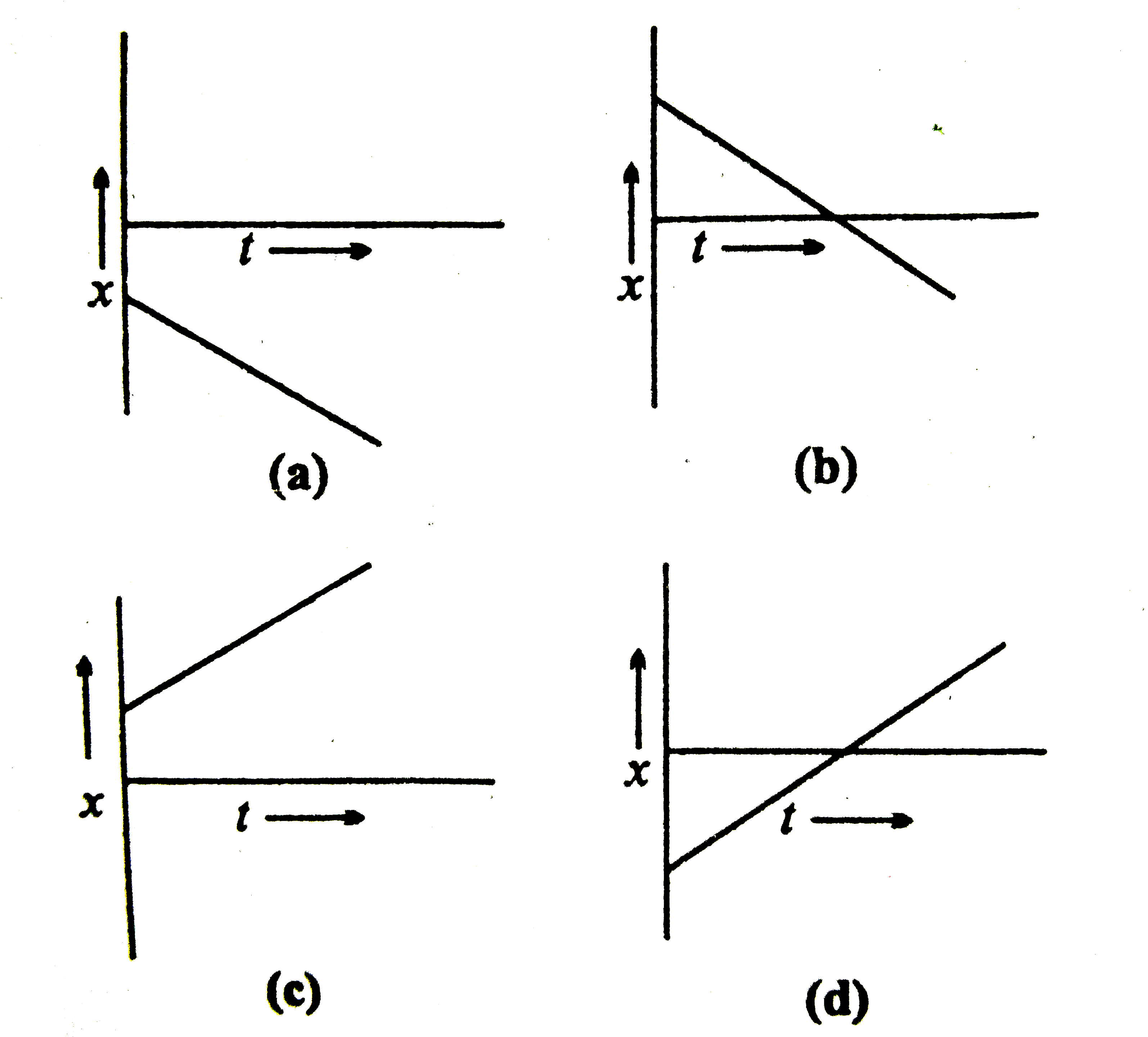एक छोटा पिंड बिना घर्षण के एक झुके हुए तल पर विराम से गति करना प्रारंभ करता है । यदि Sn, समय t=n−1 से t=n में चली गयी दुरी हों तब Sn तथा Sn+1 का अनुपात होगा -
2n−12n
2n+12n−1
2n−12n+1
2n2n+1
The correct Answer is:C
n वें s में चली गई दुरी Dn=u+12a(2n−1)
u=0
Dn=12a(2n−1)
इसी तरह,
Dn+1=12a(2n+1)
∴ DnDn+1=2n−12n+1.
Topper's Solved these Questions
Similar Questions
नीचे दिए गए गति के कौन - से उदाहरणों में वस्तु को लगभग बिंदु वस्तु माना जा सकता है
( a ) दो स्टेशनों के बीच बिना झटके के चाल रही कोई रेलगाड़ी04:45View Solutionचित्र में चार स्थिति - समय ग्राफ प्रदर्शित किये गये है। वेग के संबंध में ये क्या सूचना देते हैं?
 07:37View Solution
07:37View Solutionनिम्नलिखित भौतिक राशियों में से बतलाइए की कौन - सी सदिश है और कौन - सी अदिश -
आयतन , द्रव्यमान , चाल ,त्वरण , घनत्व , मोल संख्या , वेग , कोणीय आवृति , विस्थापन , कोणीय वेग |05:25View SolutionLet Sn=1+2+3++n and Pn=S2S2−1⋅S3S3−1⋅S4S4−1⋅⋅⋅SnSn−1 Where n∈N,(n≥2). Then limx→∞Pn=______
05:25View SolutionS_(n)=sum_(n=1)^(n)(n)/(1+n^(2)+n^(4)) then S_(10)S_(20)
04:16View SolutionA particle starts sliding down a frictionless inclined plane. If Sn is the distance travelled by it from time t=n−1sec, to t=nsec, the ratio Snsn+1 is
02:35View SolutionA small block slides without friction down an iclined plane starting form rest. Let Sn be the distance traveled from time t=n−1 to t=n. Then SnSn+1 is:
07:21View SolutionIf Sn denotes the sum of first n terms of an A.P., then
S3n−Sn−1S2n−Sn−1 is equal to01:55View SolutionIf Sn=1+12+13+…+1n(n∈N), then prove that
S1+S2+..+S(n−1)=(nS((n))−n)or(nS((n−1))−n+1)03:38View SolutionA small cube falls from rest along a frictionless inclined plane. If this distance travelled between times t = n -1 and t = n be s_(n) then the value of (s_(n))/(s_(n)+1) is
02:09View SolutionS_(N) अभिक्रियाओं में RCOOH तथा RCOCI में से किसकी क्रियाशीलता अधिक है तथा क्यों ?
03:12View SolutionLet Sn=1+2+3+...+n and Pn=S2S2−1.S3S3−1.S4S4−1...SnSn−1, where n∈N,(n≥2)Thenlimn→∞Pn=__________.
02:12View SolutionIf Sn=1+12+13+…+1n(n∈N), then prove that
S1+S2+..+S(n−1)=(nS((n))−n)or(nS((n−1))−n+1)02:27View SolutionA small block slides without friction down an iclined plane starting form rest. Let S_(n) be the distance traveled from time t = n - 1 to t = n . Then (S_(n))/(S_(n + 1)) is:
49:45View SolutionA particle starts sliding down a frictionless inclined plane. If Sn is the distance travelled by it from time t=n−1sec, to t=nsec, the ratio Snsn+1 is
02:59View SolutionLet S_(n)=1+2+3+...+n " and " P_(n)=(S_(2))/(S_(2)-1).(S_(3))/(S_(3)-1).(S_(4))/(S_(4)-1)...(S_(n))/(S_(n)-1) , where n inN,(nge2) Then underset(ntooo)limP_(n) =__________.
01:45View Solution

